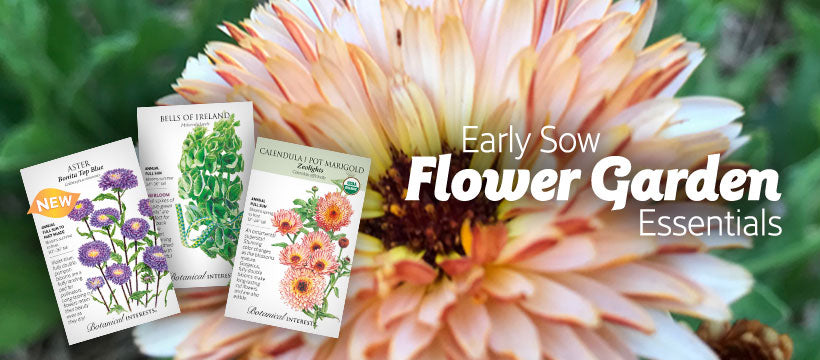Soil temperature is just as important as proper moisture to quickly achieve optimal germination rate. Without the right soil temperature range, germination can be delayed or prevented, and the germination rate will decrease. Temperatures below minimum can leave seed vulnerable to mold or hungry wildlife.
Soil temperature generally lags behind air temperature in spring, which may require you to wait longer to sow, consequently eliminating direct-sowing of some longer-season varieties from your garden. For example, some pumpkins take 120 days to mature, but also require soil temperatures of 70°–90°F for germination. If your soil doesn't typically warm in time for a variety to mature, you can start those seeds indoors, essentially extending your growing season by giving plants a head start. Even inside, however, some plants will need additional heating to maintain that ideal soil temperature; for those plants, use a waterproof seedling heat mat. Using a soil thermometer will also give you an advantage towards successful germination, as you can monitor and adjust the indoor environment to reach the optimal temperature. Germination temperature requirements are often higher than what the plant needs to grow, so once germinated, most varieties can be transplanted into cooler soils (after hardening off, and your average last frost dates).
How to use your soil thermometer
A soil thermometer is an easy-to-use, indispensable tool that can make gardening from seed more successful, helping you achieve a great germination rate. Here are some tips for using a soil thermometer to accurately measure soil temperature.
Take soil temperature measurements twice a day for an average, in the early morning and in the afternoon/evening. Taking and recording readings over a couple of days will give you an even more accurate average of your current soil temperature.
Tips:
- Place the thermometer 1"–2" in the soil for seeds, and as deep as the pot in the case of transplants.
- Shade the thermometer if it is in direct sun.
- Thermometers may read slowly, so wait until the temperature holds steady.
- Store your soil thermometer indoors, away from moisture.
- Reference our soil temperature chart below!
Download our soil temperature guide for vegetables or reference the chart below!
For more seed starting tips, see our other articles on seed starting.
Ideal Soil Temperatures for Vegetables
| Variety | Ideal Soil Temperature Range for Germination (°F) | Variety | Ideal Soil Temperature Range for Germination (°F) |
|---|---|---|---|
| Amaranth | 68-75 | Leek | 60-85 |
| Artichoke | 70-80 | Lettuce | 60-85 |
| Arugula | 50-70 | Mache | 60-70 |
| Bean | 70-85 | Melon | 40-68 |
| Bean, Fava | 40-75 | Mustard | 70-90 |
| Beet | 60-85 | Okra | 60-75 |
| Bok Choy | 75-85 | Onion | 80-90 |
| Broccoli | 60-85 | Parsnip | 60-85 |
| Brussel Sprouts | 70-85 | Peas | 50-70 |
| Cabbage | 60-85 | Pepper | 60-80 |
| Carrots | 75-85 | Pumpkin | 70-90 |
| Cauliflower | 60-85 | Quinoa | 70-90 |
| Celery | 70-85 | Radicchio | 45-50 |
| Collards | 70-75 | Radish | 60-75 |
| Corn | 75-85 | Rutabaga | 65-85 |
| Corn 'Painted Hill' | 65-90 | Sorrel | 60-80 |
| Cucumber | 50-90 | Spinach | 68-86 |
| Edamame | 70-90 | Squash | 50-75 |
| Eggplant | 70-85 | Swiss Chard | 70-85 |
| Endive | 80-90 | Tomatillo | 75-90 |
| Fennel | 60-70 | Tomato | 80-85 |
| Kale | 60-75 | Turnip | 70-90 |
| Kohlrabi | 65-85 | Watermelon | 65-80 |


